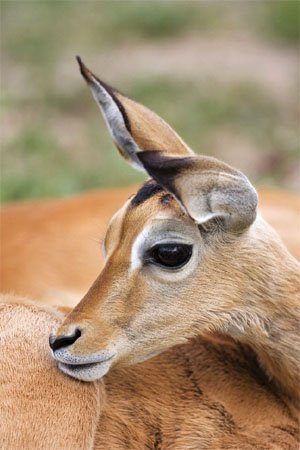Antelope
Design

The hooves of the antelope vary greatly between species. One species, Tragelaphus spekeii, has wide hooves because it lives in the wetlands, while the Oreotragus oreotragus has a pad in the center of its tiny, rounded hooves because it lives in rocky regions. The hooves of the different species of antelope demonstrate how God equipped them to live in different habitats.
Features
- All antelopes have horns that are permanently attached. Some horns are twisted in spirals, others have ridges, and others grow in wide curves.
Fun Facts
- Antelopes are powerful swimmers. If threatened, some species will jump in and hide under the water’s surface, with only their noses sticking out.
- Another species of antelope attracts a mate by repeatedly sticking out its tongue. It uses this same technique to ward off enemies.
- If an antelope gets separated from the rest of the group, it can find them by smelling the scent trail that the herd left behind from the scent glands on their hooves.
Created Kind Members
Impala, wildebeest, gazelle
CLASS: Mammalia (mammal)
ORDER: Artiodactyla (even-toed)
FAMILY: Bovidae (cloven-hooves; two-toed)
GENUS/SPECIES: There are over 90 species of antelope
Size: Largest antelope: up to 11 ft long (3.3 m); Smallest: around 19 in long (0.5 m)
Weight: Range from about 5 lbs to 2,000 lbs (2–900 kg)
Original Diet: Plants
Present Diet: Mostly herbivorous (plant-eating)
Habitat: Open plains in Africa, Asia, the Middle East, and Eastern Europe (based on species)
Zoo Guide
Make your next visit to the zoo more than just fun—make it factual and fascinating too! You could even start a personal “creation zoo tours” ministry. Featuring more than 100 animals, our long-awaited Zoo Guide includes beautiful pictures and explores the amazing facts and design features that point to our awesome Creator. Excellent gift for any one who loves animals!
Browse Kids Book- © 2025 Answers in Genesis
- Privacy Policy
- Contact
- About

